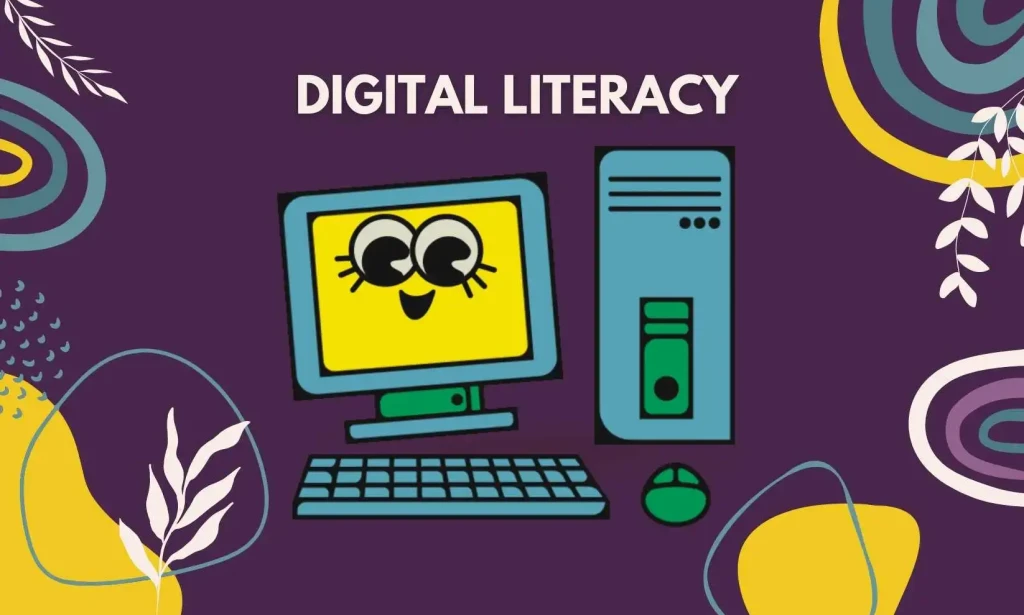
Digital literacy has become a vital skill in today's interconnected world. As technology continues to advance at a rapid pace, the ability to navigate and understand the digital landscape is more critical than ever. In this article, we'll explore the importance of teaching digital literacy and provide practical strategies for educators and learners alike.
Introduction
What is digital literacy?
Digital literacy encompasses a range of skills and competencies that enable individuals to effectively use and navigate digital devices, platforms, and technologies. It involves the ability to find, evaluate, create, and communicate information using digital tools.
Importance of digital literacy:
In a world where technology is deeply integrated into every aspect of society, digital literacy is no longer just a desirable skill—it's a necessity. From accessing information online to communicating with others and engaging in online transactions, digital literacy underpins many daily activities.
Understanding Basics
Definition of digital literacy:
Digital literacy goes beyond basic computer skills. It includes the ability to critically assess information found online, understand digital security and privacy issues, and effectively communicate and collaborate in digital environments.
Key components:
Digital literacy comprises several key components, including information literacy, media literacy, computer literacy, and critical thinking skills. These components work together to empower individuals to navigate and thrive in the digital age.
Why it's essential nowadays:
In today's era of digitalization, technology has a profound impact on nearly every aspect of our lives.. Whether it's for work, education, healthcare, or entertainment, digital literacy is essential for success and participation in modern society.
Navigating the Digital World
Internet safety:
One of the fundamental aspects of digital literacy is understanding how to stay safe online. This includes protecting personal information, recognizing online threats such as phishing scams and malware, and practicing good cybersecurity hygiene.
Identifying reliable sources:
In an era of rampant misinformation, the ability to discern credible sources from unreliable ones is crucial. Digital literacy teaches individuals how to evaluate the reliability and credibility of information found online, helping them make informed decisions.
Developing Skills
Basic computer skills:
For many people, especially those new to technology, learning basic computer skills is the first step towards digital literacy. This includes tasks such as using a keyboard and mouse, navigating operating systems, and understanding file management.
Internet navigation:
Understanding how to navigate the internet efficiently is another essential aspect of digital literacy. This includes using search engines effectively, bookmarking useful websites, and understanding web browser features and settings.
Teaching Strategies
Hands-on activities:
Engaging students in hands-on activities is an effective way to teach digital literacy skills. Activities such as creating digital presentations, conducting online research, and collaborating on multimedia projects can help reinforce learning and make it more engaging.
Interactive learning:
Interactive learning platforms and tools can also enhance digital literacy education. Platforms that offer interactive tutorials, quizzes, and simulations allow students to learn at their own pace and receive immediate feedback on their progress.
Real-world applications:
Connecting digital literacy skills to real-world applications helps students understand the relevance and importance of what they're learning. For example, teaching students how to evaluate the credibility of online news articles can empower them to be critical consumers of information.
Incorporating multimedia:
Using multimedia resources such as videos, infographics, and interactive websites can make digital literacy education more dynamic and engaging. These resources appeal to different learning styles and help reinforce key concepts.

Challenges and Solutions
Overcoming barriers:
One of the challenges in teaching digital literacy is overcoming barriers such as lack of access to technology, language barriers, and limited digital skills among learners. Addressing these barriers may require providing access to technology resources, offering multilingual instruction, and providing additional support to struggling learners.
Addressing misinformation:
Misinformation and fake news are pervasive online, making it essential to teach individuals how to critically evaluate information sources. Educators can help combat misinformation by teaching students fact-checking skills and promoting critical thinking.
Digital divide:
The digital divide refers to the gap between those who have access to technology and the internet and those who do not. Bridging this divide requires efforts to increase access to technology infrastructure, provide digital skills training in underserved communities, and address affordability issues.
Providing support and resources:
Educators and policymakers play a crucial role in supporting digital literacy initiatives. This includes providing professional development opportunities for teachers, investing in technology infrastructure in schools and communities, and promoting digital literacy awareness campaigns.
Conclusion:
In conclusion, teaching digital literacy is essential for preparing individuals to navigate and succeed in today's digital world. By equipping learners with the skills and knowledge they need to effectively use digital technologies, we can empower them to be informed, responsible, and engaged members of society.


You must be logged in to post a comment.